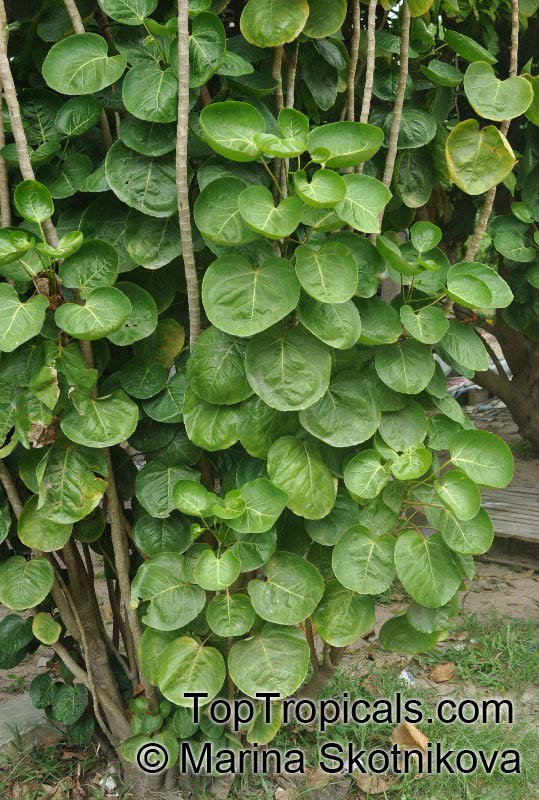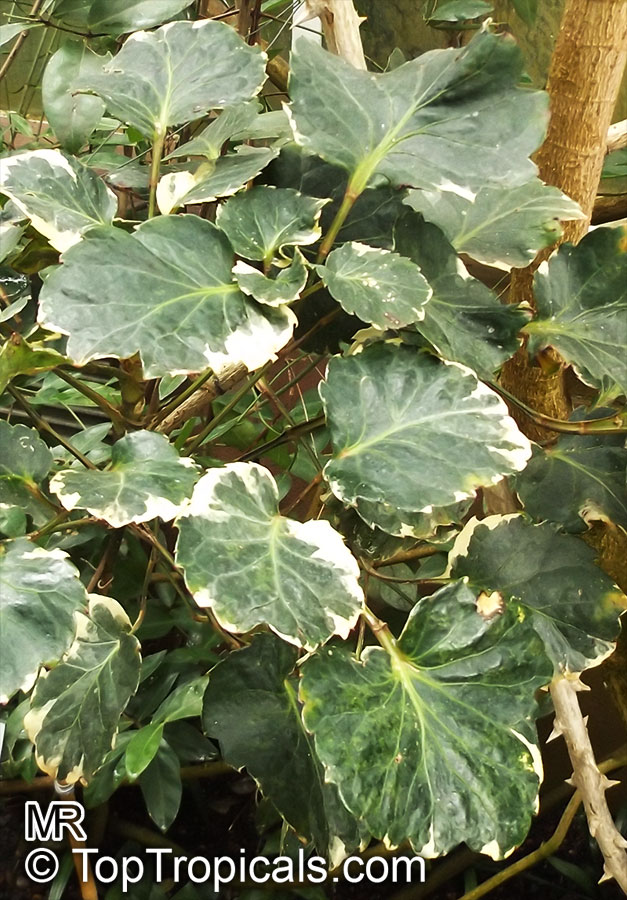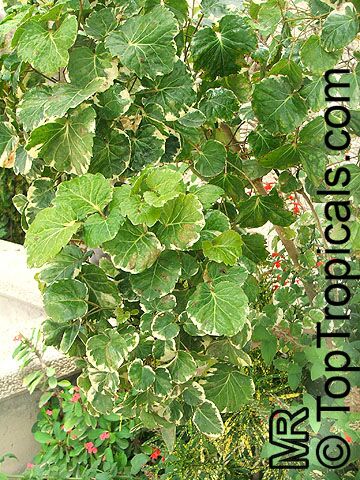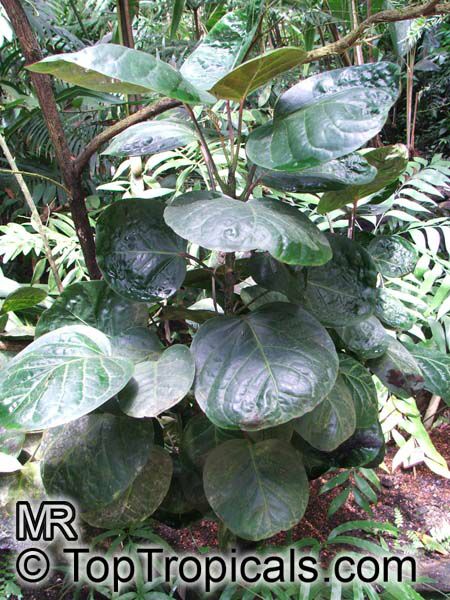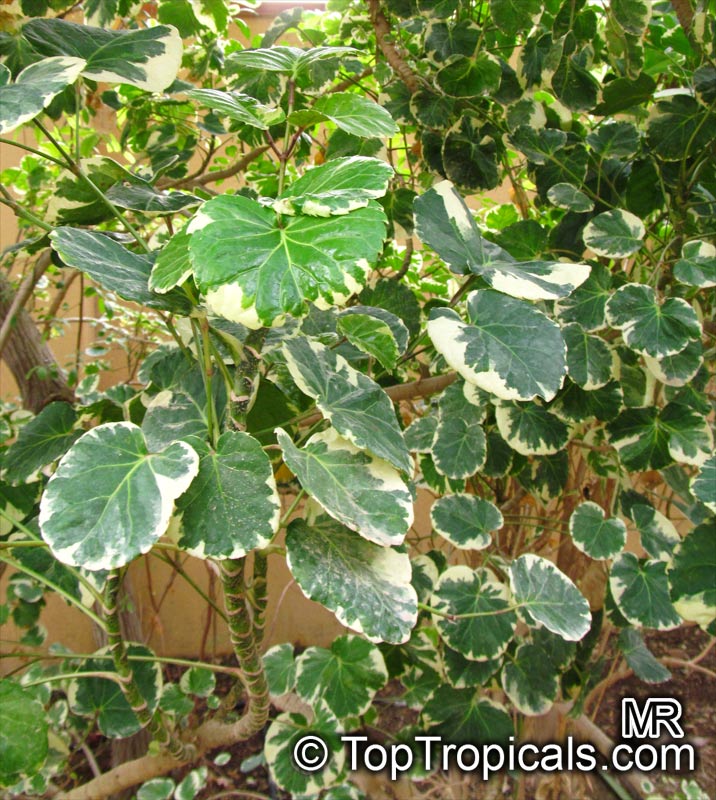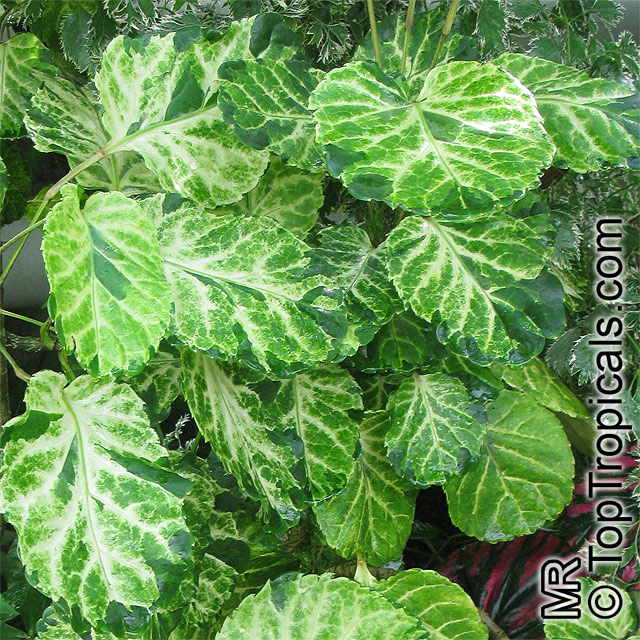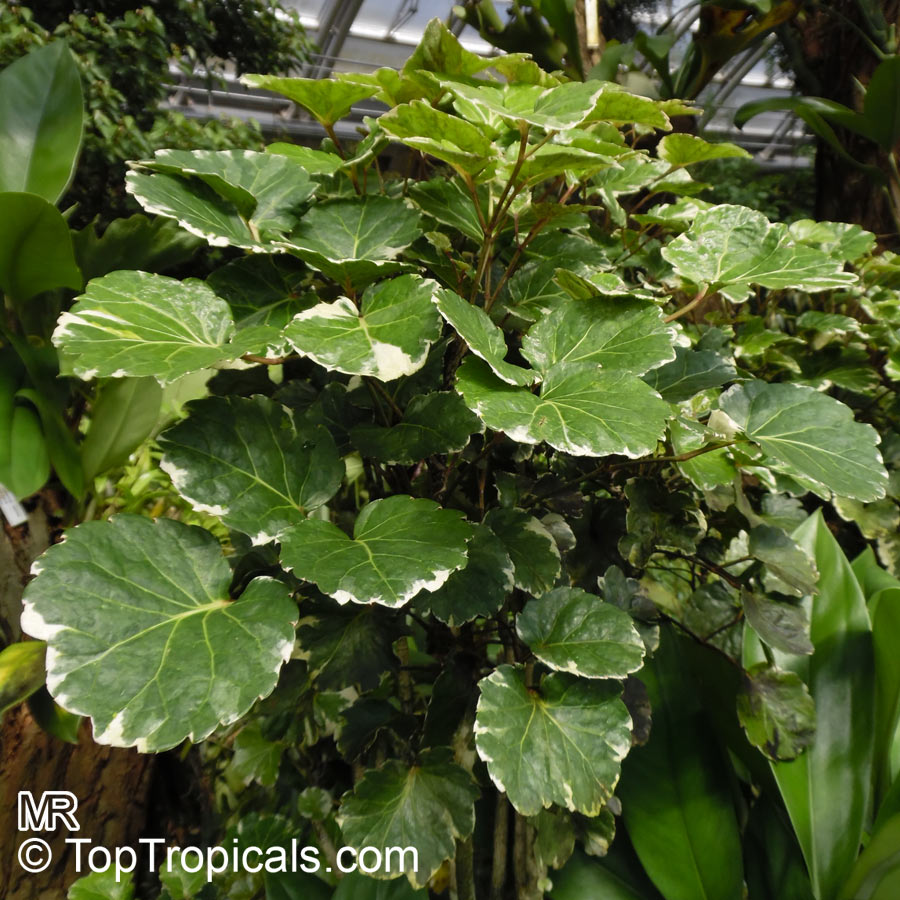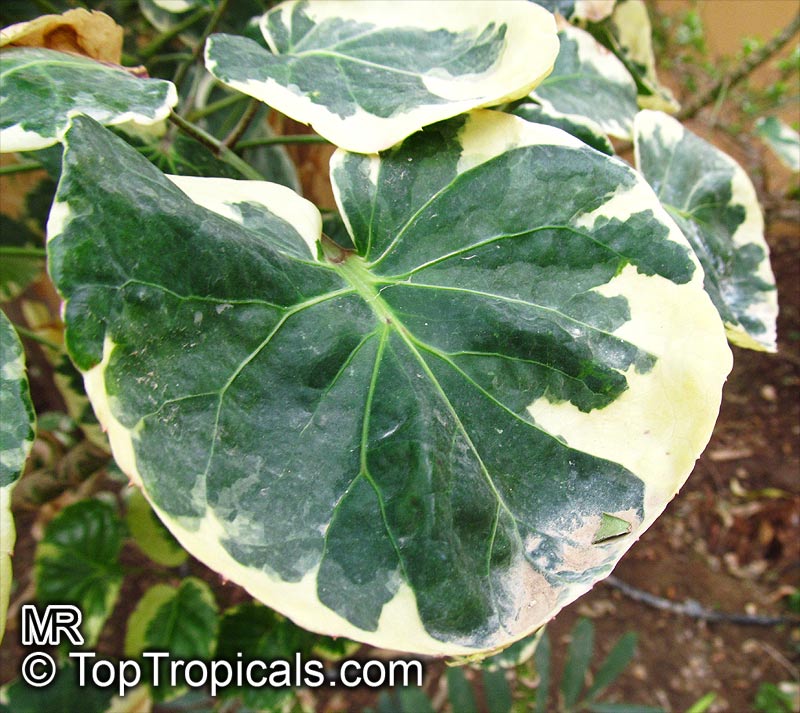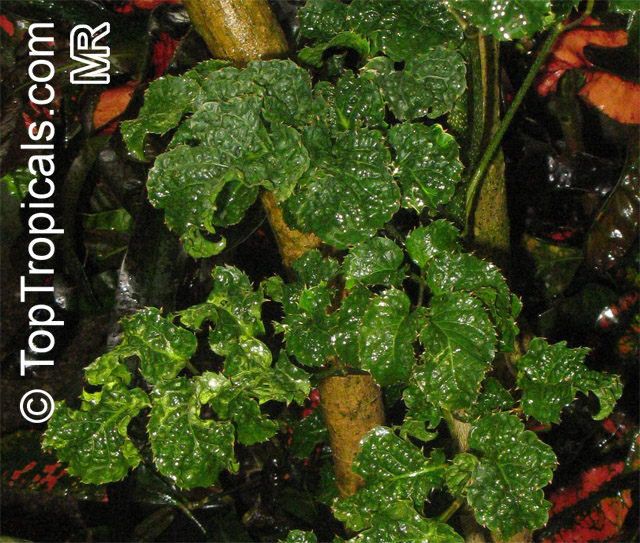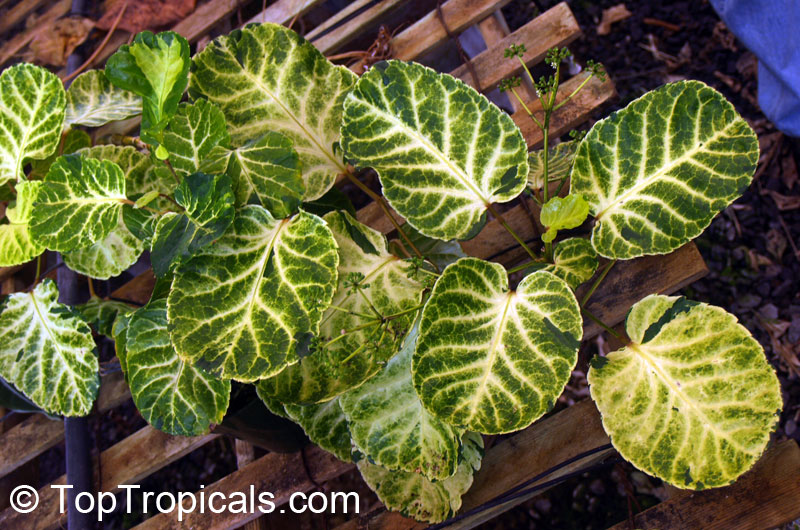Polyscias scutellaria (Shield Aralia)
Top Tropicals Plant Encyclopedia
Botanical names: Polyscias scutellaria, Polyscias balfouriana, Polyscias pinnata
Common names: Shield Aralia, Dinner Plate Aralia
Family: Araliaceae
Origin: Africa to the Pacific Islands







Polyscias scutellaria, otherwise known as the Shield Aralia, is a beautiful and ornamental tropical tree native to regions of Africa and the Pacific Islands. Its foliage can range in colors from a bright green, to a slight variegation of green and yellow. This tree can grow up to 10-20 feet in height and is suitable for being grown as a bonsai.
When it comes to its ideal environment, Polyscias scutellaria prefers full sun and can even tolerate semi-shade. However, strong afternoon sunlight should be avoided as this can cause leaf burn. It should be watered regularly to ensure even moisture levels, though be careful not to overwater as this can lead to root rot. An easy draining soil which is nutrient-rich with a slightly acidic pH is optimal for growth in USDA Zones 9-11, however, if grown in cooler climates such as zone 8, it is important to move the plant to a more protected location, especially during winter and provide it with a specialized care. If planted in a pot, it is important to use a pot with a wide mouth and shallow depth; this will help the roots spread more easily.
The caudex, or swollen stem base, found on Polyscias scutellaria is an organ high in nitrogen which helps the plant to survive during periods of drought. This caudex should be regularly trimmed and monitored for insect infestations. Additionally, it is also important to pinch back the leaf nodes to encourage bushier growth and more flowers.
When given proper care, Polyscias scutellaria can give your garden a splash of its vibrant colors, and make an attractive feature piece. It thrives in warmer climates, but its hardy and resilient qualities allow it to survive the changing seasons. Just be sure to protect it from cold drafts and cold water, as this can cause leaf drop.
